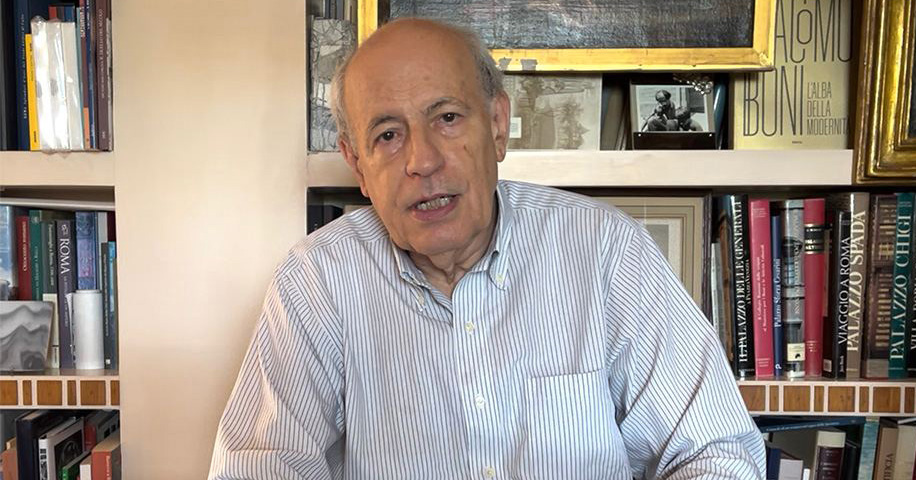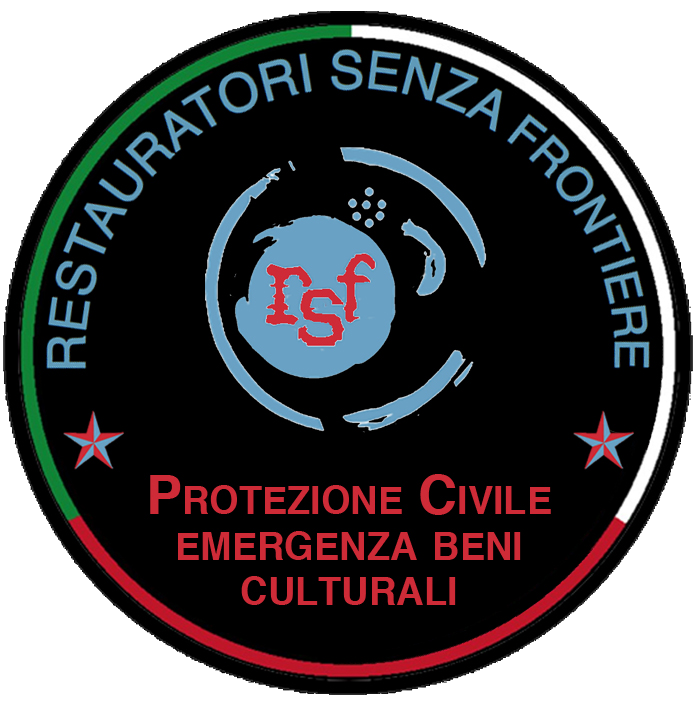Claudio Strinati: The case of the Petrella Tifernina Crucifix is an emblematic example in the history of the preservation of universal artistic heritage – VIDEO

We publish the video through which Prof. Claudio Strinati, a member of the Scientific Committee of RSF Italy, participated in the Presentation of the Volume The Crucifix of Petrella Tifernina: the Discovery, the Restoration which took place on June 30, 2022 in Campobasso.
Copyright © 2022 Dialogues Arte
Below is the transcript of the text of the speech.
Dear friends good evening to all,
I had a strong desire to be part of this moment of presentation. Unfortunately I have to resort to the form of video because I am among the countless people affected by COVID, just these days I tested positive and I am compulsorily recluse but at least there is this possibility. This is a remarkable event from my point of view and I think from all lovers of fine arts, meanwhile for the work, for the work of art that has been returned now by the community of the Crucifix.
Sometimes the term masterpiece is spent excessively, and we will try not to be excessive, but perhaps in a case like this the terminology is not inappropriate, in the sense that the case of the crucifix of Petrella Tifernina is precisely an emblematic example in the whole history of the preservation of universal artistic heritage, that is, it is an object that a very noble popular tradition has consecrated as a motif of deep worship, of faith, but apparently not endowed with all those elements that make art, which does not necessarily coincide with devotion.
Artistic devotion is a very delicate subject, we Catholics who venerate images also know this very well, however, we know very well that the sacred image is not the sacred directly, it is a reminder, a vehicle that leads us to faith but it is not faith, a statue depicting the crucifix is not the crucifix and the object of veneration is the crucifix, not that individual statue. This logic tells us, but tradition tells us much more, that is, it tells us the popular afflatus that deposits its very soul inside an artistic object, elevates it somehow to the plane of faith, does not transform it though.
In the Catholic tradition there is this deep respect for the image, but often art scholars are very careful to distinguish between respect for popular devotion and the intrinsic artistic interest of the object. A Madonna weeping tears of blood, which is the object of popular devotion, is not necessarily then considered by art scholars to be a work of art sum, but that does not detract from the devotion. It was thought that in the case of Petrella Tifernina there was something like this, a crucifix of little artistic significance, it was, however, the object of a love of a respect of a popular devotion, which nevertheless made it a valuable work for the community.
However, the loving and competent study of the real experts, suggested that in this case there was something much more, that that crucifix was covered by remakes, by readjustments, certainly not dictated by deep love for art but simply by the need to make readable an image, actually perhaps born with little artistic aptitude.
Because we thought that this story instead becomes a universal emblem, a symbol, because it is subjected to the Loving and competent care of Restorers Without Borders, their consultants, and the relevant fine arts officials in the area.
It is on the specific technique that what is often dreamed of by those in this profession has emerged, that is, under guises that are not particularly artistically relevant, a work of art has emerged, but a real one, reflecting a moment in the history of universal art that is supreme and, the result of the work of an undoubtedly more than remarkable, great artist’s hand.
The data that emerged from the restoration, which was conducted according to those principles of philology, of the deepest respect, even for the work of the previous generations who intervened on the work, is moving, I have to say I was honored by the friends of the association of which I myself am a member, trying to bring my contribution as far as I can. When we met in the studio in Rome, in Tor de’ Specchi, a magical cavern, where scientific wisdom and the deepest love for the artistic message itself finds a home, when I was involved in meetings with the greatest experts who began to look at this operation with an eye at first astounded then scientifically oriented and finally historically satisfied. A whole chapter of our country’s art history in a remote place and let’s face it one of the areas least frequented by restoration studies, Molise. In Italy there is even this, the land of art that has the greatest capitals, its centers revered by the whole world, a myriad of sites on the territory sometimes microscopic and yet endowed with universal fame, resonance, and even remote places, more distant from research and study. And these places, such as Petrella Tifernina, for example, as they appear to us now, very powerful centers of history art and religiosity, aesthetic research of the highest order.
When the restorers realized that the author of the Petrella crucifix Florentine and. excuse me Tifernina, forgive the slip of the tongue but I myself am of Florentine origin and Tifernina to my ears sounds like some kind of remote memory and, in examining with the eye of a Historian once restored, Florentine memories crowded to my mind, Francesco da Sangallo for example, the great Florentine master who fertilized with his work some areas of southern Italy, a most powerful artist, shocking in his ability to combine the deep emotionality of the Christian rovello, well when I saw that truly sensational discovery, whereby the sculptor of Petrella Tifernina represents agony, a very rare and wonderful case, the eyes of Christ are about to close because death is coming, but they are not yet closed and that face emanates from itself the fright, the terror of one who feels death approaching and, this is what the sacred scripture tells us. The Christ saying father why have you forsaken me, but of course it doesn’t make sense from a certain point of view, but it does make sense because the doctrine will then proclaim, from the Council of the Lynxes onward, Christ true God and true man and the mother, mother of Christ and mother of God at the same time, so the bewilderment of the true man who also turns to the father of whom he has full awareness, but that awareness will become absolute total at the moment of the resurrection. Just a moment before physical death comes, Christ is real man and he is frightened and suffers horribly, precisely because it is the awareness of physical death that is coming.It is the depiction of that eye, which still alive expresses terror and fear, is a thing of at once marvelous artistic and theological power. We do not know who the author of this work is, many exegetes and, it is discussed in the book, see it connected to a Germanic tradition that has its roots in those lands of Molise, after all it is the same church that contains a very evident, very powerful moving Lombard tradition. Well all this is illustrated and discussed in the book that we present edited by Marisa Laurenzi Tabasso and Paolo Pastorello and published by Restauratore Senza Frontiere, it is the first book that the association publishes on its own as a publishing house, a true symbol of the commitment and the result of this work, the photographs are by Araldo De Luca. It is moving to think that in order to honor the absolute excellence of this work of art and the tradition it represents, the greatest forces of culture have been concentrated, Araldo De Luca you know dear friends is one of the most remarkable art photographers in the cultural history of our country, by a lucky coincidence he was able to be the author of the photographs that illustrate this book.
This book is a milestone in the history of the restoration of the preservation and enhancement of our Heritage. It is very beautiful to see, and it is documented by the photographs, how a community, that of Petrella Tifernina, brought this work to us so that we could fix it and restore it in the splendor of glory. A community of scholars and experts, of art connoisseurs and technicians, was created, and they followed and accompanied in this work, identifying almost with that community spirit from which work started, from which the need arose.
A photo testifies to a memorable day in 2017, a committee came together promoted by the officials active in the area, supported by the director of the Central Institute for Restoration, Caterina Bonn Valsassina, who wanted to endow, also in the many presentations of this book, one of her writings recalling that beautiful moment, we confronted each other as friends, as colleagues, among those who share a same commitment and a same faith, yes, in a sense a secular faith in art and conservation, a very beautiful moment and this book preserves it, because it preserves not only the history of conservation but the history of a friendship of a sharing that we are witnesses to today.
So dear friends a warm affectionate greeting and above all dictated by great respect for you for ourselves and our work for this great work of art.
Claudio Strinati – 30 June 2022









